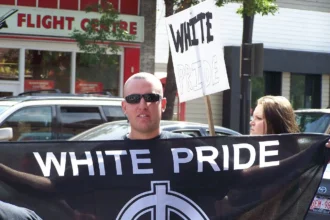The Dual Principles at Play
Universities serve as critical arenas where the intricate balance between freedom of expression and the pursuit of equity is constantly negotiated. In the context of Canadian universities, this equilibrium is especially fragile and vital. Here, the principles of expression and equity are not only academic concepts but are also deeply embedded in legal frameworks, such as the Canadian Charter of Rights and Freedoms and various human rights legislations. These twin pillars uphold the notion that while individual freedom of speech is essential, it must coexist with the collective goal of equitable treatment for all, particularly those from marginalized backgrounds.
Recently, the challenges in maintaining this balance have become more pronounced. The emergence and growth of extreme right groups on campuses have sparked intense debates over the extent to which expression should be regulated to protect equity. The crux of these debates often revolves around the question of how to create a learning environment that is safe and inclusive for all students, without unduly curtailing the vibrant exchange of ideas. This tension underscores the ongoing struggle within Canadian universities to harmonize the rights to free expression with the necessity of ensuring an equitable academic landscape for every student, irrespective of their background.
The Role of Student Codes and Civility Policies
In the complex tapestry of university governance, student codes of conduct and civility policies are significant tools. These policies, designed by university administrations, are intended to guide and sometimes regulate students’ non-academic behavior. Ideally, they serve to maintain a respectful and harmonious campus environment. However, the implementation of these policies often wades into contentious waters, particularly when they intersect with the realm of political advocacy, a critical component of expression and equity in academic settings.
The application of conduct codes often highlights a clear discrepancy, impacting marginalized students disproportionately.
This intersection becomes particularly charged when the advocacy efforts of marginalized groups are involved. These groups often utilize political expression as a tool to challenge existing inequities and to strive for a more inclusive university environment. However, the application of conduct codes and civility policies can, at times, inadvertently or otherwise, curtail these efforts. Rather than fostering the intended safe and respectful learning environment, these codes can paradoxically limit students’ freedom of expression. This limitation not only impacts their ability to voice concerns but also restricts their capacity to engage critically with controversial or challenging ideas.
Moreover, these policies can create a dichotomy between the ideal of fostering a safe learning space and the reality of limiting open discourse. In their quest to balance expression and equity, universities face the challenge of ensuring that these codes do not become instruments that inadvertently suppress the very voices they are meant to protect. The task then is to craft and implement policies that support a diverse range of expressions while safeguarding the principles of equity, ensuring that all students, especially those from marginalized communities, have equal opportunities to participate in the vibrant academic discourse that is the hallmark of higher education.
Legal Autonomy and Educational Missions
Canadian universities enjoy a unique position of legal autonomy, a privilege that grants them significant independence from direct government oversight. This autonomy empowers these institutions to formulate their own regulations concerning student conduct, a responsibility that carries profound implications for the principles of expression and equity. Such autonomy, while essential for preserving academic freedom, also raises intricate questions about the nature and limits of permissible speech within the academic sphere. These questions become particularly pertinent when considering the types of discourse that align with or advance the educational missions of these institutions.
The promotion of free speech, without concurrent consideration of equity, can lead to environments where the expression of some overshadows or diminishes the rights and dignities of others.
Universities often declare their commitment to upholding students’ rights to freedom of expression and association, considering these rights as foundational to the educational experience. However, the reality of implementing these rights reveals a landscape marked by inconsistencies and limitations. The challenge lies in determining which forms of speech and association serve the educational objectives and values of the university, and which might contravene them. This task is complicated by the diverse and sometimes conflicting perspectives within the university community.
Furthermore, the autonomy of universities necessitates a careful balancing act. On one hand, there is a need to maintain an environment conducive to free academic inquiry and expression, a cornerstone of higher education. On the other hand, there is an equally pressing need to ensure that this freedom does not infringe upon the principles of equity and inclusivity. The pursuit of this balance often places university administrations at the crossroads of complex ethical and legal dilemmas, where the boundaries of expression and equity are continually negotiated and redefined. In this context, the role of university policies becomes not just administrative but also profoundly educational, guiding students not only in their academic pursuits but also in their understanding and practice of civic responsibilities and rights.
Discrepancies in Application of Conduct Codes
The application of conduct codes often highlights a clear discrepancy, impacting marginalized students disproportionately. These students regularly face a troubling gap between their rights to expressive freedom and their rights of association, a gap that underscores the ongoing struggle in balancing expression and equity. The quasi-juridical frameworks of these codes, although intended to regulate student behavior fairly, sometimes fall short in protecting students from discriminatory or biased enforcement.
Hate speech is not just offensive but is an affront to the dignity of vulnerable members of society.
This imbalance in the application of conduct codes can lead to contradictory outcomes, where the intent to create a respectful and equitable environment inadvertently suppresses political speech and advocacy. This is especially concerning when considering the principles of expression and equity, as the voices of marginalized students advocating for change or representation are the ones most at risk of being silenced or penalized.
Notable examples of this discrepancy can be seen in incidents at Dalhousie University and Wilfrid Laurier University, where the nature of the speech and the identity of the speaker influenced the enforcement of conduct codes. These instances illustrate how the application of these codes is not always aligned with the ideals of expression and equity, leading to questions about fairness and the equitable treatment of all students.
To address these issues, it is crucial for universities to reevaluate their conduct codes, ensuring they are applied in a manner that genuinely upholds the values of expression and equity. This reevaluation should aim to create an environment where students can engage in open, meaningful discourse without fear of unfair retribution, and where the rights to free expression and equitable treatment are not just theoretical ideals, but actively upheld and protected in the daily life of the university.
The Impact of Government Directives
The landscape of expression and equity within Canadian universities has been significantly influenced by recent government directives, particularly those introduced by the Ford administration in Ontario. These directives, centered around the principle of free speech, were ostensibly designed to reinforce the freedom of expression on university campuses. However, their implementation has had complex and often unintended consequences, complicating the already delicate balance between free speech and equity.
Instead of mitigating the tensions inherent in balancing these principles, these directives have, in some instances, exacerbated them. One notable effect has been the empowerment of certain groups, whose rhetoric or actions may challenge the principles of equity and inclusivity. This empowerment has sometimes led to confrontations and conflicts, as exemplified by the events at York University. Such incidents underscore the intricate challenges involved in maintaining an environment where expression and equity are both valued and protected.
The directives, while aiming to uphold the value of free speech, have inadvertently highlighted the nuances and difficulties in ensuring that this freedom does not impinge upon the equitable treatment of all students. The case at York University illustrates how the promotion of free speech, without concurrent consideration of equity, can lead to environments where the expression of some overshadows or diminishes the rights and dignities of others.
In light of these developments, it becomes evident that a more nuanced approach is necessary—one that not only champions the freedom of expression but also actively upholds and fosters principles of equity. Universities, in response to these government directives, are thus faced with the task of reevaluating their policies and practices to ensure that they are not only compliant with legal requirements but also reflective of a commitment to a balanced and equitable academic environment. This balance is crucial for fostering a campus atmosphere where diverse perspectives are heard and respected, and where every student has the opportunity to participate fully and freely in the academic community.
Canadian Hate Speech Laws and Dignitary Harm
The legal landscape of Canada regarding hate speech laws plays a pivotal role in the discourse of expression and equity, particularly in the context of higher education. These laws, while relatively limited, focus predominantly on speech that incites hatred against identifiable groups. However, their application and interpretation, especially within university environments, are often subjects of debate and confusion. This uncertainty significantly affects how issues of free speech and equity are navigated in academic settings.
Central to understanding Canada’s approach to hate speech is the distinction between undermining a person’s dignity and merely causing offense. Legal scholar Jeremy Waldron has significantly contributed to this discourse, articulating that hate speech is not just offensive but is an affront to the dignity of vulnerable members of society. It represents an assault on the public good of inclusiveness, challenging the fundamental notion of equality that is integral to a democratic society. Waldron’s perspective is crucial in universities, where the principles of expression and equity are constantly being examined and redefined.
Hate speech, as defined in this context, goes beyond mere offensive language or discomfort. It questions the very right of certain groups to be treated as equals in society. This form of speech can have far-reaching implications, necessitating a legal framework that not only addresses the content of the speech but also protects the dignity of individuals and groups. The emphasis is on ensuring that universities, as microcosms of society, do not become platforms for rhetoric that devalues or diminishes the worth of any group based on their identity.
In this light, Canadian universities have a responsibility to interpret and apply hate speech laws in a manner that upholds both expression and equity. The challenge lies in creating an academic environment that respects freedom of speech while simultaneously safeguarding the dignity and equality of all members of the university community. This delicate balance is essential in fostering a diverse, inclusive, and respectful academic atmosphere, where all students can thrive without fear of dignitary harm.
Expression and Equity – Towards a Balanced Approach
The challenges encountered in Canadian universities serve as a microcosm of the larger societal tensions that straddle the delicate line between freedom of expression and the pursuit of equity. These challenges necessitate a thoughtful and balanced approach from administrators and policymakers. It is imperative to establish criteria that not only help students in identifying and mitigating dignitary harms but also ensure that the voices and perspectives of marginalized groups are adequately represented and heard.
This balanced approach signifies a shift towards a more decolonial perspective, moving away from a narrowly defined liberal conception of rights. It advocates for an academic environment that is not just inclusive in rhetoric but also equitable in practice. Such an environment acknowledges and respects the diverse experiences and worldviews of its student body, thereby enriching the academic experience for all.
In pursuit of this balance, universities must navigate the complexities of expression and equity with care and precision. The goal is to foster a campus culture where open dialogue is encouraged, and all students feel valued and supported. This approach is not just about upholding principles on paper; it’s about embedding these values into the very fabric of the academic community, ensuring that every student’s right to expression is balanced with an unwavering commitment to equity.
Adapted from an academic article for a wider audience, under license CC BY 4.0









